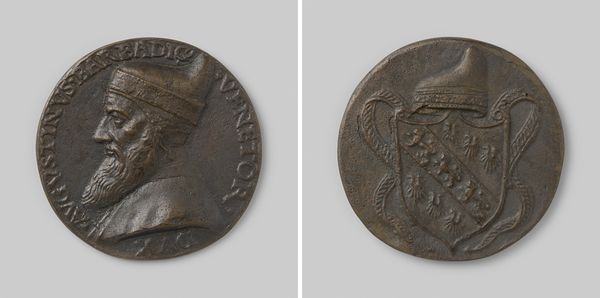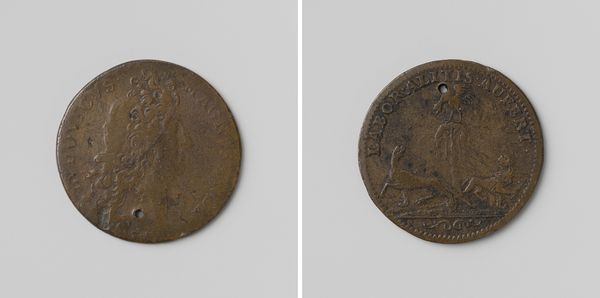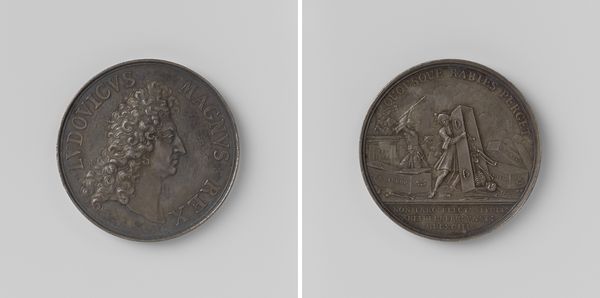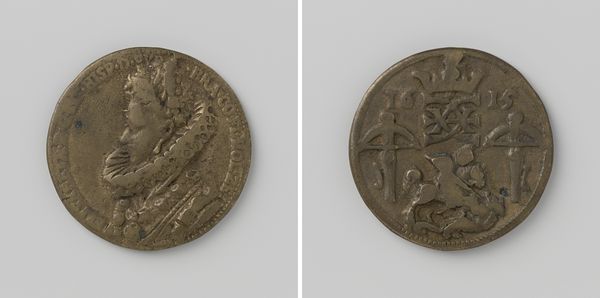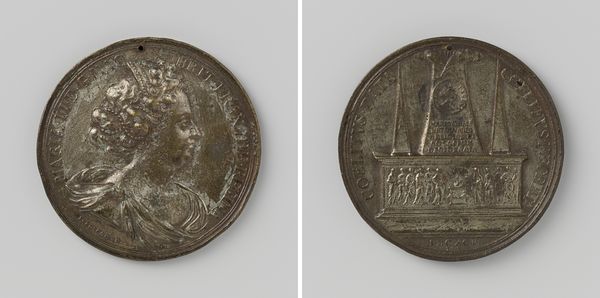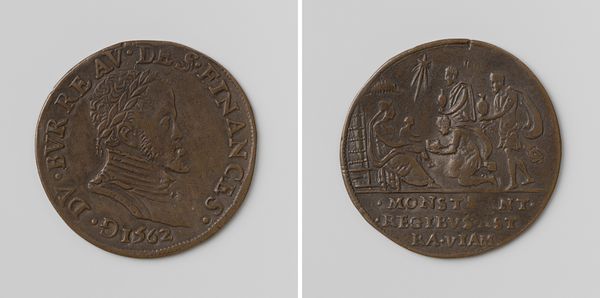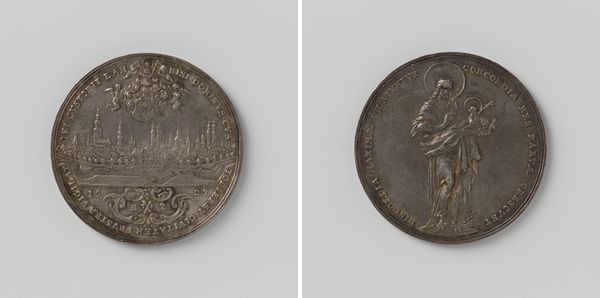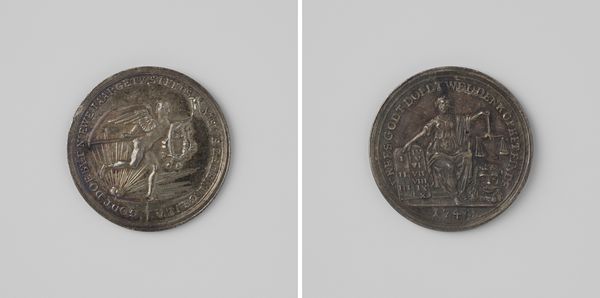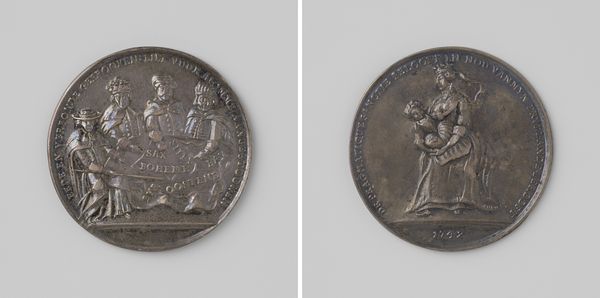
carving, metal, relief, bronze, sculpture
#
portrait
#
carving
#
metal
#
sculpture
#
relief
#
bronze
#
11_renaissance
#
ancient-mediterranean
#
sculpture
#
carved
#
history-painting
Dimensions: diameter 2.9 cm, weight 4.34 gr
Copyright: Rijks Museum: Open Domain
Curator: Look at the craftsmanship of this bronze relief carving; it’s truly remarkable. It depicts Filips II, King of Spain, and dates back to 1558. What are your immediate thoughts? Editor: Well, considering the turbulence and religious persecution that defined Philip II’s reign, the serene portrait feels incredibly ironic, almost propagandistic. The laurel wreath feels performative given his brutal legacy. Curator: Indeed, imagery often serves power. The wreath itself symbolizes victory and honor—classical virtues linked here to kingship. This isn’t just a portrait; it’s carefully constructed symbolism meant to project strength and legitimacy. The detail, considering it's a carving, is quite incredible. Editor: Precisely, it's a potent reminder of how leaders curate their image, masking often violent power dynamics. On the other side we have a depiction of the Adoration of the Magi. It includes a Latin inscription that refers to, “showing kings the way.” Curator: Yes, the pairing creates an intentional link. On the one hand, there is Philip, the all powerful, temporal King; and, on the other, the eternal king receiving homage. Do you think the image speaks more to aspirations or historical truths? Editor: Undoubtedly aspiration. Though historical paintings do not portray factual truths. Even though it contains some truth, it aims at producing specific socio-political effects, and is very intentional about it. In what ways would you say historical narratives impact our present day perceptions of events? Curator: Historical narratives often solidify power structures and collective identities, for better or worse. By seeing ourselves within a certain visual language and trajectory, it becomes easier to naturalize or question contemporary problems. History allows us to decode both our past and our present realities. Editor: This medal, for instance, attempts to normalize Philip's rule. To think critically, we should understand the power structures that produced these images and continuously reassess their narratives. The narratives solidify as time passes by, thus influencing the society through many aspects, like politics and gender studies. Curator: It’s about discerning what cultural threads are worth holding onto and which ones need unraveling, precisely. Editor: An image of faith can often reinforce political authority and historical interpretations. I believe exploring this reinforces this conversation today.
Comments
No comments
Be the first to comment and join the conversation on the ultimate creative platform.

